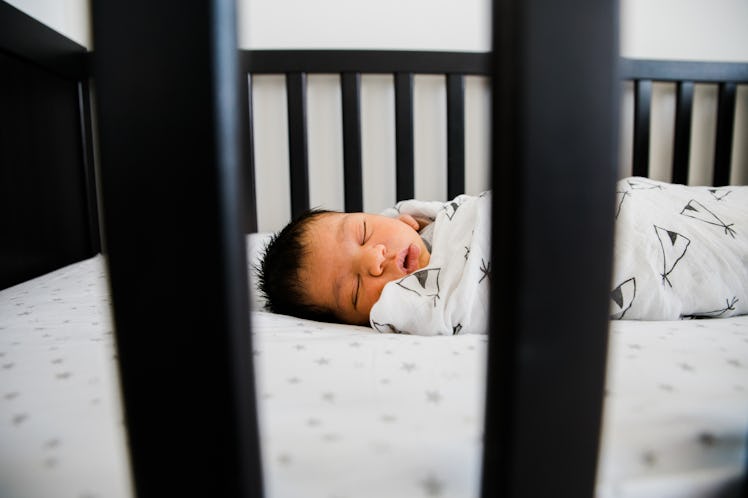Why You Shouldn’t Worry So Much About SIDS
Take the recommended precautions, but once your kid is sleeping safely, you can stop hovering over the monitor.

Confession: I’ve been so scared of SIDS that I can’t sleep. I’ve stared at my infant as they slept and thought about SIDS risk. My oldest was about 8 months at the time, and I had finally gotten around to sleep training him. I hauled a cot into his bedroom, plopped him down in the crib, and stared morosely at him, hating myself as he cried for a full hour. Eventually, we both drifted off to sleep. But around 3 a.m., I woke with a start. Was the baby breathing? I couldn’t tell. In a daze of sleepy terror, I reached into the crib and shook him roughly.
He was fine — unhappy, but fine.
Most parents have at least one story like this, and nearly all of us are guilty of checking to make sure our sleeping babies are breathing. We could be excused for the paranoia. From the moment our kids are born, healthcare professionals hit us over the head with safe sleeping practices: baby on their back, no toys in the crib, tight-fitting sheets. Doctors don’t always say that if we fail to comply, our babies will suffocate in their sleep. But that’s what they mean, right? So we follow their instructions (and if we don’t, we should). Then we proceed to worry anyway.
That is our mistake.
Rates of sudden infant death syndrome, or SIDS, (defined as the unexplained death of a child less than 1 year old, usually while asleep) have declined significantly. Even at its height, SIDS wasn’t exactly common — only 0.1% of babies died from SIDS in 1990. That figure has since dropped to 0.033%. To be fair, SIDS is still the leading cause of death for infants between 1 month and 1 year of age. But to be even fairer, 0.033% is only one in 3,000 babies.
One in 3,000 is probably risky enough to worry about — for context, your odds of dying in a motor vehicle accident per year are 1 in 8,303. Which is why you really should be worried about SIDS, if you’re not engaging in safe sleep practices. Co-sleeping and any number of other dangerous behaviors do put your baby at risk.
But what is the risk of SIDS if you keep all the rules? Sleeping in the same room with your child for the first six months of their life cuts their SIDS risk in half. And that’s just by taking one precaution. Take more, and it becomes very unlikely that SIDS will come for your child. You’re far more likely to end up in the emergency room due to an injury from a can, bottle, or jar (one in 1,000) or due to an injury from your pillow (one in 2,000).
If you’re following the American Academy of Pediatrics’ safe sleeping guidelines, your child is essentially safe.
This doesn’t mean you need to stop peeking in to check whether the baby is breathing. We’re parents, after all, and we’re going to do that. But at the very least, the act of checking need not be traumatic. Once your baby is fast asleep on their back, in an environment that conforms to the American Academy of Pediatrics’ standards, you should get some sleep yourself.
And if you find yourself shaking your healthy infant awake at 3 a.m., desperately groping for signs of life, try to keep the statistics in mind. Odds are, your baby is just fine.
This article was originally published on